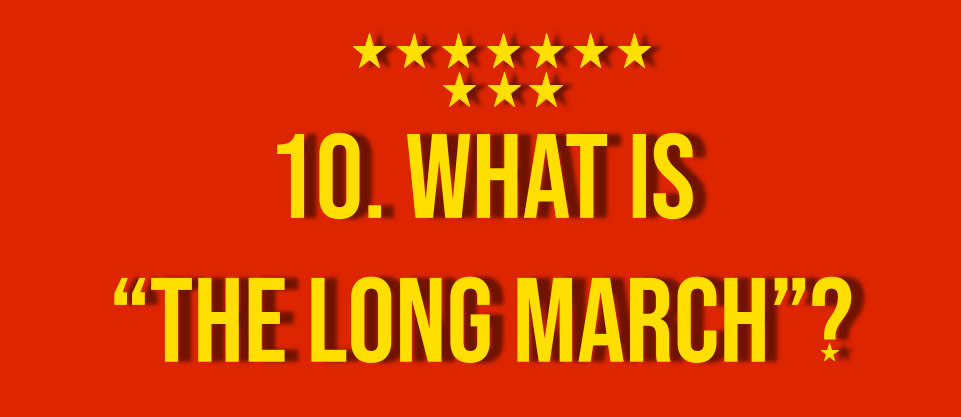10. What is "The long march"?
The Long March, a seminal event in modern Chinese history, was a military retreat undertaken by the Chinese Communist Party (CCP) from 1934 to 1936. This arduous journey, spanning thousands of miles, symbolized the resilience, perseverance, and determination of the CCP in the face of formidable challenges and marked a significant turning point in the history of the Chinese revolution. This essay aims to provide a comprehensive overview of the Long March, its historical significance, and its enduring legacy in shaping the course of modern Chinese history.
Background and Motivations
The Long March was precipitated by the encroaching forces of the Chinese Nationalist Party (Kuomintang) and the ensuing power struggle between the CCP and the ruling nationalist government. Facing imminent defeat, the CCP embarked on a strategic retreat, navigating through treacherous terrains and hostile territories in an attempt to regroup and consolidate its forces. The decision to undertake the Long March was motivated by the imperative to preserve the CCP's leadership and ideology, establish new bases of operation, and expand its influence within rural communities.
Challenges and Triumphs
The Long March presented a series of formidable challenges, including harsh environmental conditions, hostile encounters with enemy forces, and the logistical difficulties of sustaining a large army on the move. The arduous journey, which covered approximately 6,000 miles across mountains, rivers, and hostile territories, tested the resilience and fortitude of the CCP's soldiers and leadership. Despite enduring significant losses and hardships, the Long March served as a testament to the unwavering commitment and revolutionary spirit of the CCP, fostering a sense of unity and camaraderie among its members and solidifying the party's resolve to continue the fight against the nationalist government.
Impact and Historical Significance
The Long March's historical significance extends beyond its military dimensions, representing a pivotal moment in the CCP's revolutionary narrative and its quest for political and ideological supremacy. The consolidation of Mao Zedong's leadership during the Long March, exemplified by his strategic acumen and charismatic leadership, laid the foundation for his ascension to the paramount leadership position within the CCP. Moreover, the Long March served as a catalyst for the CCP's engagement with rural communities and the mobilization of peasant support, fostering the party's grassroots appeal and establishing its legitimacy as a vanguard of the Chinese proletariat.
Enduring Legacy and Commemoration
The Long March's enduring legacy continues to be commemorated as a symbol of the CCP's resilience, determination, and revolutionary zeal. The narrative of the Long March has been immortalized in Chinese history and culture through literature, art, and commemorative events, emphasizing the heroism and sacrifices of the CCP's soldiers and the enduring spirit of the Chinese revolution. The Long March's commemoration serves as a poignant reminder of the transformative power of perseverance and the indomitable will of a revolutionary movement in the pursuit of ideological and political ideals.
Final thoughts
The Long March stands as a testament to the endurance and fortitude of the Chinese Communist Party during a critical juncture in its revolutionary struggle. The Long March's historical significance as a transformative event in modern Chinese history underscores its enduring legacy as a symbol of the CCP's resilience, ideological commitment, and enduring pursuit of political and social change. Understanding the multifaceted dimensions of the Long March is crucial for comprehending its profound impact on the CCP's trajectory and its enduring legacy in shaping contemporary China.



